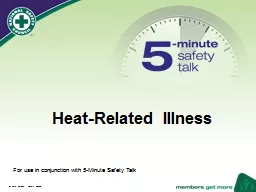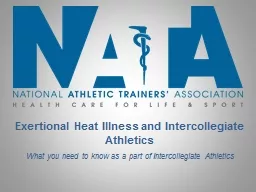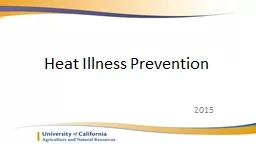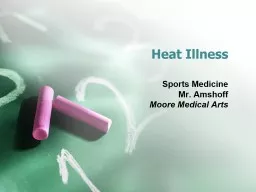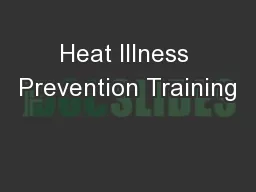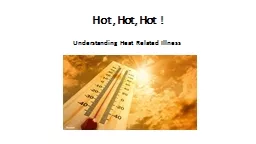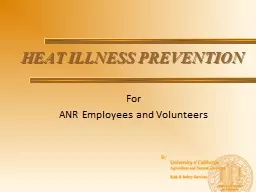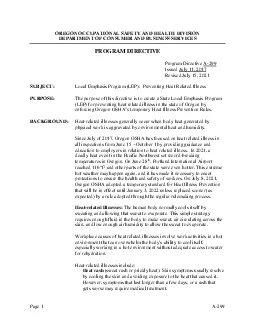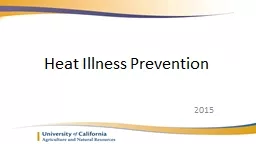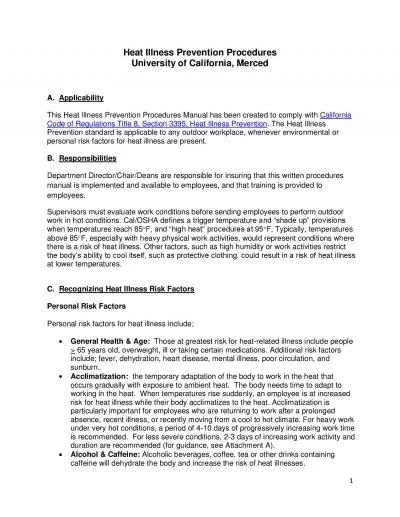PPT-Heat-Related Illness For use in conjunction with 5-Minute Safety Talk
Author : lydia | Published Date : 2022-05-18
The body burns calories and produces heat to maintain 986 Fahrenheit temperature Two effective ways the body rids itself of heat are Sweating Sweat evaporating
Presentation Embed Code
Download Presentation
Download Presentation The PPT/PDF document "Heat-Related Illness For use in conjunct..." is the property of its rightful owner. Permission is granted to download and print the materials on this website for personal, non-commercial use only, and to display it on your personal computer provided you do not modify the materials and that you retain all copyright notices contained in the materials. By downloading content from our website, you accept the terms of this agreement.
Heat-Related Illness For use in conjunction with 5-Minute Safety Talk: Transcript
Download Rules Of Document
"Heat-Related Illness For use in conjunction with 5-Minute Safety Talk"The content belongs to its owner. You may download and print it for personal use, without modification, and keep all copyright notices. By downloading, you agree to these terms.
Related Documents

